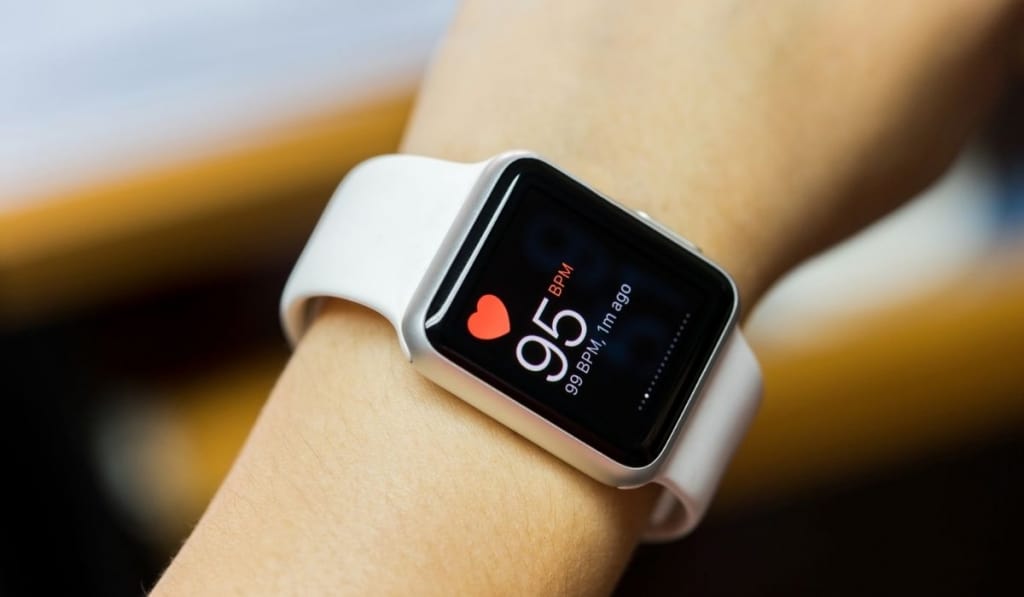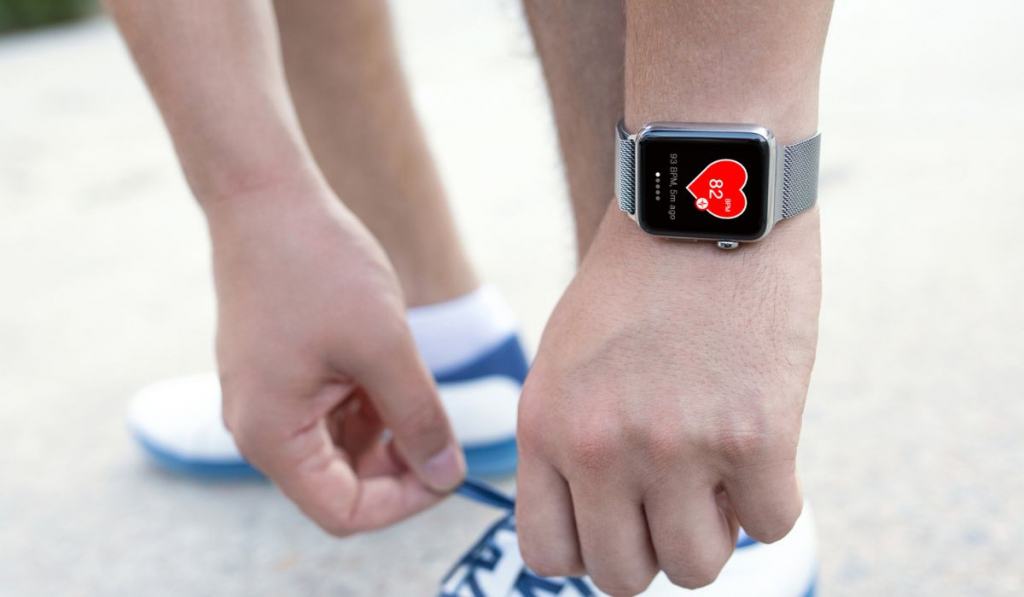How Accurate Is The Apple Watch Blood Oxygen App?
The Apple Watch Series 6 was released with excellent tools and features for measuring health, one of them being an advanced blood oxygen sensor and app. But the new technology raised eyebrows, and users are wondering if it’s accurate. So, what’s the verdict?
The Blood Oxygen sensor and app are pretty accurate but not a replacement for commercial devices. The app and sensor use reflectance pulse oximetry, which is less precise than commercial devices in most cases. However, other studies show that the Apple Watch is comparable.
However, these features might not replace routine doctor visits and health appointments. But how can you use these tools on your device? We cover everything you need to know in the article below. Read on for more information.
Is the Blood Oxygen Sensor on the Apple Watch Accurate?

The Apple Watch Series 6 includes a blood oxygen sensor that raised eyebrows around 2020. The component consists of four groups of green, red, and infrared LEDs, alongside four photodiodes on the rear crystal of the device that is used to measure light reflected from blood.
The watch utilizes an advanced algorithm built into the Blood Oxygen software to track blood oxygen measurements between 70 and 100 percent.
Apple hasn’t released any studies or significant data that support the accuracy of its blood oxygen software. However, some studies might indicate that reluctance oximetry, the same technology used in the AW6, is not as accurate as transmittance oximetry.
What Is Oximetry, and Are There Different Types?
To understand why the AW6 blood oxygen sensors might not be as accurate, it’s essential to understand the different types of oximetry. There are two main types of pulse oximetry, including transmissive and reflectance. Each method has advantages, disadvantages, and best use cases.
What is Oximetry?
Simply put, pulse oximetry consists of a test used to measure the oxygen saturation levels of the blood. The test is easy, painless, and measures how effectively oxygen is sent to different parts of your body, like the arms and legs.
Typically, a clip-like device is placed on a body part, like the finger or ear lobe. The device uses light to measure the oxygen levels in the blood.
However, there are other ways to measure blood oxygen levels. Understanding blood oxygen levels can help healthcare providers determine if a patient needs additional oxygen.
Transmissive Pulse Oximetry
Transmissive pulse oximetry is the most common approach to measuring blood oxygen levels. This approach uses a clip-like sensor that attaches to a thin piece of a patient’s body, like a finger or ear.
The fingertips and earlobes are used because they have increased blood flow movements than other areas and facilitate heat transfer. The clip-like component passes two wavelengths of light through the fingertip or earlobe and into a photodetector.
The photodetector measures absorbance changes of each wavelength, determining the absorbance due to the arterial blood. The photodetector also excludes skin, bone, muscle fibers, fat, and venous blood.
Reflectance Pulse Oximetry (Used in the Apple Watch Series 6)
The Apple Watch Series 6 utilizes reflectance pulse oximetry. This type of oximetry is a less common approach. Reflectance pulse oximetry doesn’t require a thin section of a patient’s body part, like the end of a finger or ear. Instead, a person can utilize this technology on the feet, forehead, chest, and wrists.
However, the technology has some limitations. For example, reflectance pulse oximetry might not be as effective or accurate due to increased variability from ambient light, applied pressure, and position variation. However, other studies have found that the Apple Watch’s blood oxygen sensors are just as accurate as commercial devices.
How to Use the Blood Oxygen App on the Apple Watch
Using the blood oxygen app on the Apple Watch Series 6 is extremely straightforward. Here’s everything you need to know.
What You Need to Start
- First, ensure that the blood oxygen app is available in your location or country. Then, you’ll determine if the app is available during the setup process.
- Ensure your iPhone 6s or later is using the latest version of iOS.
- Ensure your Apple Watch Series 6 or Series 7 is using the latest version of watchOS.
- Remember that the blood oxygen app is unavailable for people under 18 years old. Instead, you’ll need to confirm or assign your age in your Health Profile.
Set Up the Blood Oxygen App
- Open the Health app on your iPhone device.
- Follow any onscreen prompts. If you don’t see any steps to set up, hit the Browse tab, click Respiratory, Blood Oxygen, and tap Enable.
- After completing the setup prompts, launch the Blood Oxygen app on your Apple Watch. Then, you can start measuring your blood oxygen levels.
If you can’t find the Blood Oxygen app on your Apple Watch, scroll through the App Store on your Apple Watch to locate the app. You can download the Blood Oxygen app from the App Store.
During the setup stage in the Health app, the Blood Oxygen app should be installed. If it wasn’t installed or deleted, you could install the Blood Oxygen app from the App Store on your Apple Watch. Then, you’ll need to complete the Blood Oxygen app setup process again.
How to Use the Blood Oxygen App
You can measure your blood oxygen levels at any time using the Blood Oxygen software.
- Ensure your Apple Watch fits snugly and comfortably on your wrist.
- Launch the Blood Oxygen software on your Apple Watch.
- Keep your wrist flat with the Apple Watch facing up and stay still.
- Hit Start to begin. Keep your arm flat and steady for 15 seconds.
- Wait 15 seconds for the measurement to finish. You will receive the results after the measurement is completed.
- Review your measurements and click Done to finish.
Tips to Help You Get the Best Results
There are several tips you can use below to get the most out of your Apple Watch Blood Oxygen app.
- Ensure you’re resting your arm on a flat surface when you take a measurement.
- Ensure your wrists and palms are down and flat while taking measurements. Hold as still as possible.
- Ensure that your Apple Watch isn’t loose and is snug-fitting. The band should be tight but comfortable, and the back of the device needs to be touching your wrist.
- Ensure that the back of the Apple Watch is flush against the top of your wrist. You move the watch 1 to 2 inches up your arm if your wrist bone interferes with the process.
Additional Factors

It’s important to note that the Apple Watch might not receive a reliable measurement every time, even under the best conditions. Various factors can make it nearly impossible to obtain an accurate blood oxygen measurement for a small percentage of users.
- Skin perfusions can negatively impact measurements. Skin perfusions will vary significantly from person to person. Your environment can also impact skin perfusion. For example, cold weather can reduce the effectiveness of the Blood Oxygen sensor, and you might receive an inaccurate measurement.
- Permanent and temporary changes to your skin can also impact measurements. For example, ink, patents, and tattoos can block light from the Blood Oxygen sensor, reducing effectiveness. If possible, you might need to place the Apple Watch on your other wrist.
- Motion can also impact the accuracy of the Blood Oxygen app. Certain positions, like your arms hanging by your side or clutching your hands in a fist, can create inaccurate measurements. Ensure your arm is flat and stable when measuring blood oxygen levels.
- Heart rate can also impact measurements. If your heart rate is above 150 bpm while at rest, you won’t get an accurate blood oxygen measurement.